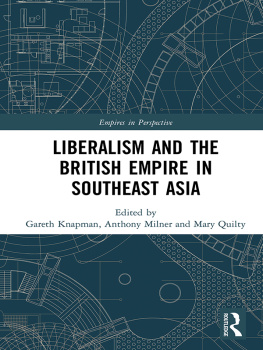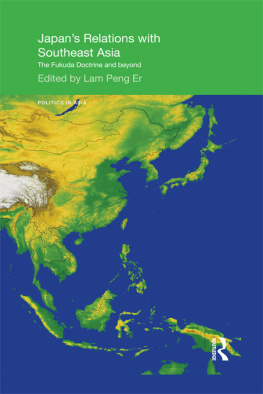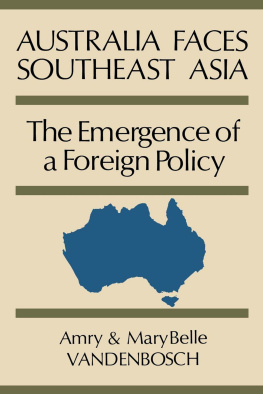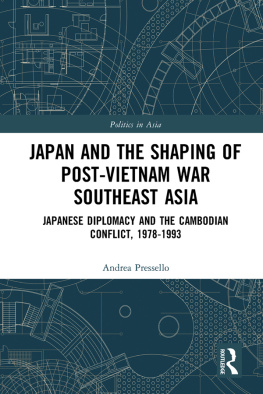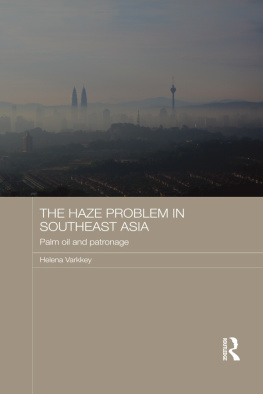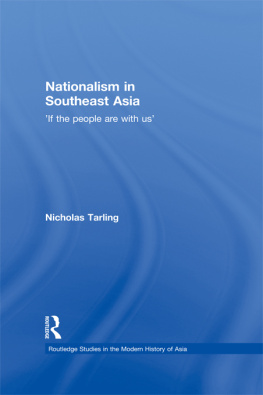Japans Colonial Moment in Southeast Asia 19421945
The first-ever attempt to paint a full-scale portrait of the Japanese Occupation of Southeast Asia during the Asia-Pacific War (19425). This book draws on the huge body of available narrativemilitary documents, bureaucratic records and personal accounts of combatants and civilians, including diaries, memoirs and collected correspondencemost of which have previously been either unknown or unavailable to non-Japanese readers. It examines how the Japanese imperial adventure in Southeast Asia sped up the collapse of the Japanese Empire as a whole, not only through its ultimate military defeat in the region, but also due to its failure as an occupier from the very beginning.
Nakano explains the significance of the Japanese Occupation of Southeast Asia as a learning experience for the occupiers, whether soldiers on the frontlines or civilians on the home front. He uses a synthesis, overlay and juxtaposition of a selection of these narratives, to reassemble the narrative as a whole. This brings into focus the outlook of those Japanese who set out for Southeast Asia with the purpose to urge the regions occupied people to collaborate with Japan to transform the region into an integral part of the Greater East Asia Co-Prosperity Sphere. Many would eventually discover that what required change was Japan and its whole approach to colonial rule, as was realized so quickly in the postwar era.
The original Japanese version was published as Tonan Ajia senryo to Nihonjin: Teikoku Nihon no kaitai [The occupation of Southeast Asia and the Japanese: The dismantling of the Japanese Empire]. Tokyo: Iwanami Shoten, 2012. ISBN: 430922542X.
Nakano Satoshi is Professor of History of the Graduate School of Social Sciences, Hitotsubashi University, Tokyo, Japan.
Routledge Contemporary Japan Series
Rethinking Japanese Studies
Eurocentrism and the Asia-Pacific Region
Edited by Kaori Okano and Yoshio Sugimoto
Japans Quest for Stability in Southeast Asia
Navigating the Turning Points in Postwar Asia
Taizo Miyagi
Gender and the Koeski in Contemporary Japan
Surname, Power, and Privilege
Linda White
Being Young in Super-Aging Japan
Formative Events and Cultural Reactions
Edited by Patrick Heinrich and Christian Galan
The Japanese Communist Party
Permanent Opposition, but Moral Compass
Peter Berton with Sam Atherton
Japans Colonial Moment in Southeast Asia 19421945
The Occupiers Experience
Nakano Satoshi
Animism in Contemporary Japan
Voices for the Anthropocene from Post-Fukushima Japan
Shoko Yoneyama
Political Sociology of Japanese Pacifism
Yukiko Nishikawa
For more information about this series, please visit: www.routledge.com/Routledge-Contemporary-Japan-Series/book-series/SE0002
First published 2019
by Routledge
2 Park Square, Milton Park, Abingdon, Oxon OX14 4RN
and by Routledge
711 Third Avenue, New York, NY 10017
Routledge is an imprint of the Taylor & Francis Group, an informa business
TONAN AJIA SENRYO TO NIHONJIN: TEIKOKU NIHON NO KAITAI
by Nakano Satoshi
2012 by Nakano Satoshi
Originally published in 2012 by Iwanami Shoten, Publishers, Tokyo.
This English edition published in 2019 by Routledge by arrangement with Iwanami Shoten, Publishers, Tokyo
The right of Nakano Satoshi to be identified as authors of this work has been asserted by him in accordance with sections 77 and 78 of the Copyright, Designs and Patents Act 1988.
All rights reserved. No part of this book may be reprinted or reproduced or utilized in any form or by any electronic, mechanical, or other means, now known or hereafter invented, including photocopying and recording, or in any information storage or retrieval system, without permission in writing from the publishers.
Trademark notice: Product or corporate names may be trademarks or registered trademarks, and are used only for identification and explanation without intent to infringe.
British Library Cataloguing-in-Publication Data
A catalogue record for this book is available from the British Library
Library of Congress Cataloging-in-Publication Data
Names: Nakano, Satoshi, 1959 author. | Translation of: Nakano, Satoshi, 1959 Tonan Ajia senryo to Nihonjin.
Title: Japans colonial moment in Southeast Asia, 19421945 : the occupiers experience / Satoshi Nakano.
Other titles: Tonan Ajia senryo to Nihonjin. English
Description: New York : Routledge, 2019. | Series: Routledge contemporary Japan series ; 76 | Includes bibliographical references and index.
Identifiers: LCCN 2018026197| ISBN 9781138541283 (hardback) | ISBN 9781351011495 (e-book)
Subjects: LCSH: World War, 1939-1945Southeast Asia. | World War, 1939-1945Occupied territories. | JapanForeign relationsSoutheast Asia.
| Southeast AsiaForeign relationsJapan. | JapanHistory20th century. |
Greater East Asia Co-prosperity Sphere.
Classification: LCC D767.2 .N323513 2019 | DDC 327.52059/0904dc23
LC record available at https://lccn.loc.gov/2018026197
ISBN: 978-1-138-54128-3 (hbk)
ISBN: 978-1-351-01149-5 (ebk)
Typeset in Galliard
by Wearset Ltd, Boldon, Tyne and Wear
20 April 1992. At a conference room in Kyoto University Hall, Yoshida Kawara Machi, Saky-ku, Kyoto City, I had been conducting an interview with Mr. Hitomi Junsuke, joined by Professor Terada Takefumi and Mr. Morita Ryji as co-interviewers, for more than five hours. Mr. Terada was just about to leave in order to catch a Hikari super-express bound for Tokyo as Mr. Hitomi fumbled in his bag for something and took out a sheaf of manuscript, which would later be published as The 14th Army Propaganda Details Documentary Sources of Propaganda Operations [Watari Shdan Hdbu, ed. 1996]. The audio tape of the interview recorded a buzz of amazement among us, the scholars in front of unknown treasures.
When I ask myself why I wrote this treatise as an attempt to reconstruct Japanese historical experiences in Southeast Asia during World War II by weaving myriad of narratives left by Japanese sent there as the occupiers, the memory of this interview comes back to me as the starting point. At that time, under the command of Professor Ikehata Setsuho, the pioneer Japanese scholar of Philippine history, a batallion of scholars including Terada Takefumi, Nagano Yoshiko, Hayase Shinz and Kawashima Midori among others, were fighting a battle against time, searching historical sources and conducting interviews at home and abroad. It was a part of a large-scale grants-in-aid project for historical studies on the Japanese occupation period in Southeast Asia, sponsored by Toyota Foundation since the late 1980s.
I started as a scholar of U.S. history, having taught students U.S. history in Japanese universities up to now. It would have never occurred to me to write a book on the Japanese occupation of Southeast Asia had I not been invited to join the project. I was invited simply because I had studied Philippine-U. S. colonial relations. Considering this, my gratitude goes to Professor Ikehata Setsuho and colleagues of the project, interviewees, donors of historical materials and the Toyota Foundation, which made such a productive joint research project possible. I am also grateful for those scholars of contemporary history of Japan who made me learn by ear from the fruite conversation I was able to have with them on such occasions as the Summer Seminar of Contemporary History and Rekishigaku Kenkyukai (Historical Science Society of Japan), sometimes while drinking!


